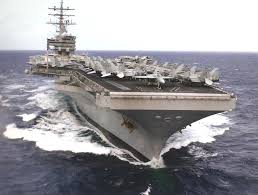The latest US maritime strategic document, “A Cooperative Strategy for 21st Century Seapower: Forward, Engaged, Ready,” released yesterday, makes clear that Washington is pressing ahead with its “pivot to Asia” and military build-up against China. In doing so, the US is continuing to stoke up tensions in the East and South China seas, compounding the danger of war.
The document, prepared by the US Navy, Marine Corps and Coast Guard, and known by the acronym CS21R, is the first major maritime strategic update since 2007. In addressing “a global security environment characterised by volatility, instability, complexity and interdependencies,” it focuses on the “rising importance of the Indo-Asia-Pacific region,” and emphasises that “the economic importance, strategic interests and geography of this vast maritime region dictate a growing reliance on naval forces to protect US interests.”
CS21R insists it is “imperative” that the US maintain its global naval predominance to defend key American interests and prevent “our adversaries from leveraging the world’s oceans against us.” The document notes, “The ability to sustain operations in international waters far from our shores constitutes a distinct advantage for the United States.”
There is nothing benign about the US strategy of maintaining overwhelming naval superiority in the Indo-Pacific region. The Pentagon’s plans for war against China, known as “AirSea Battle,” rely on the ability to mount a massive offshore air and missile attack on the Chinese mainland, including China’s military and infrastructure, supplemented by an economic blockade. Under the pretext of securing “freedom of navigation,” the US navy is ensuring that it has the ability to block key shipping lanes across the Indian Ocean used by China to import energy and raw materials from Africa and the Middle East.

